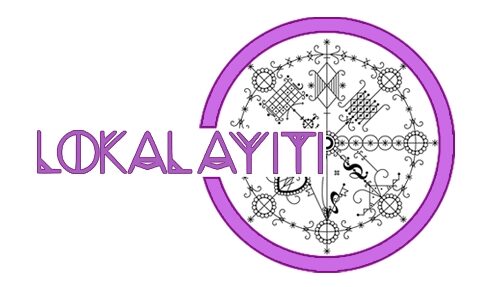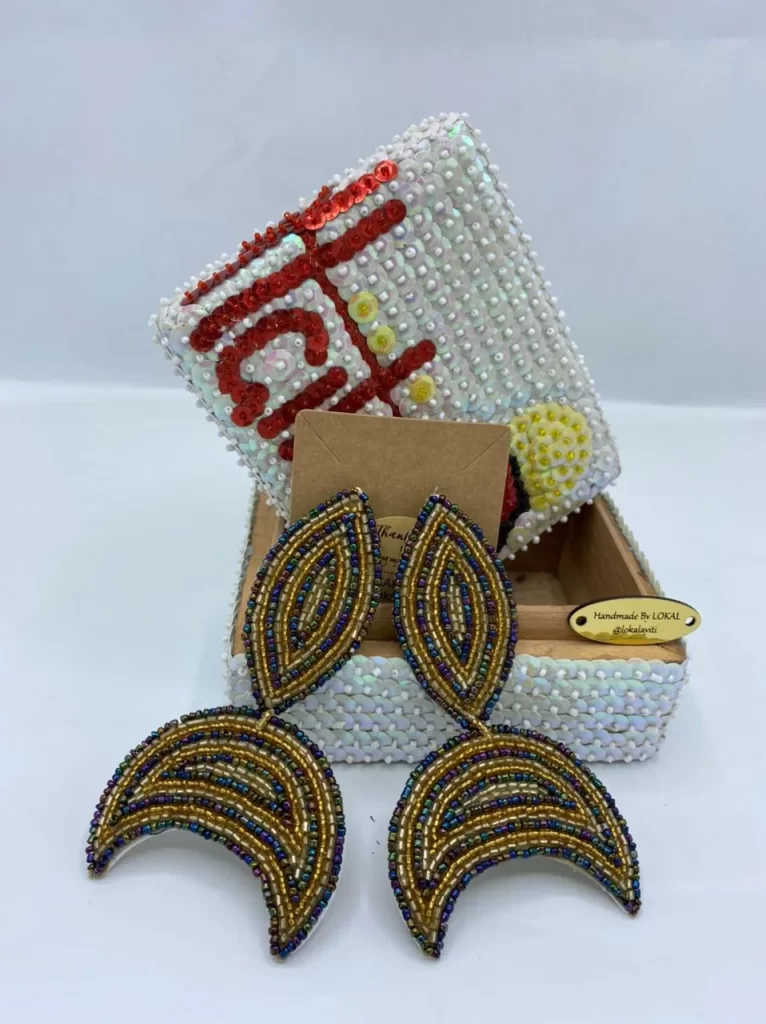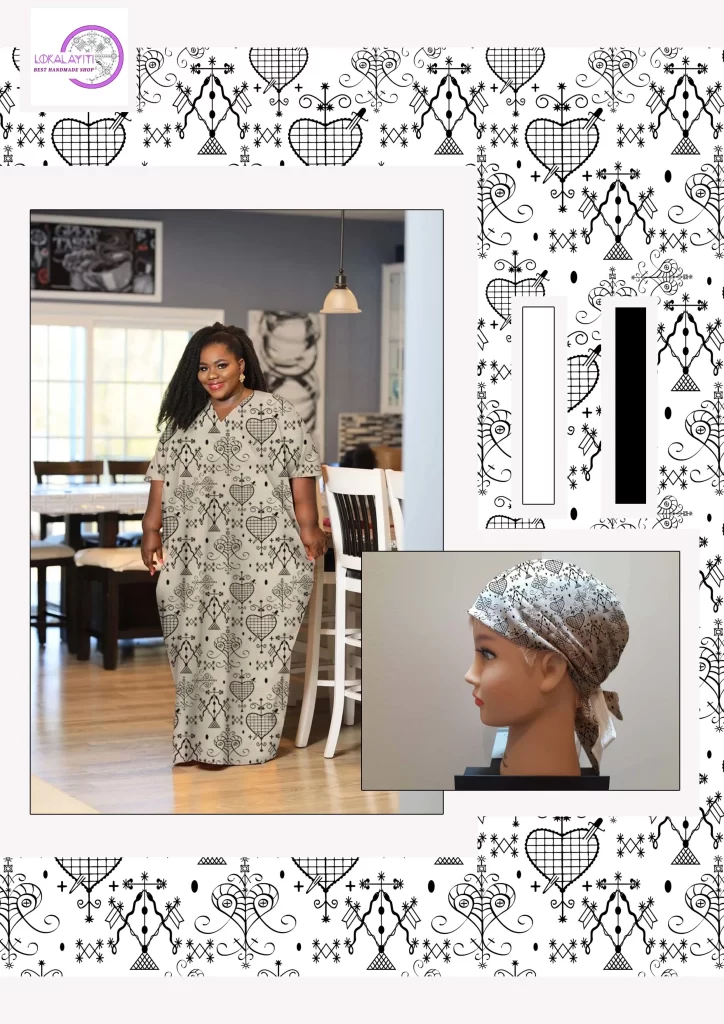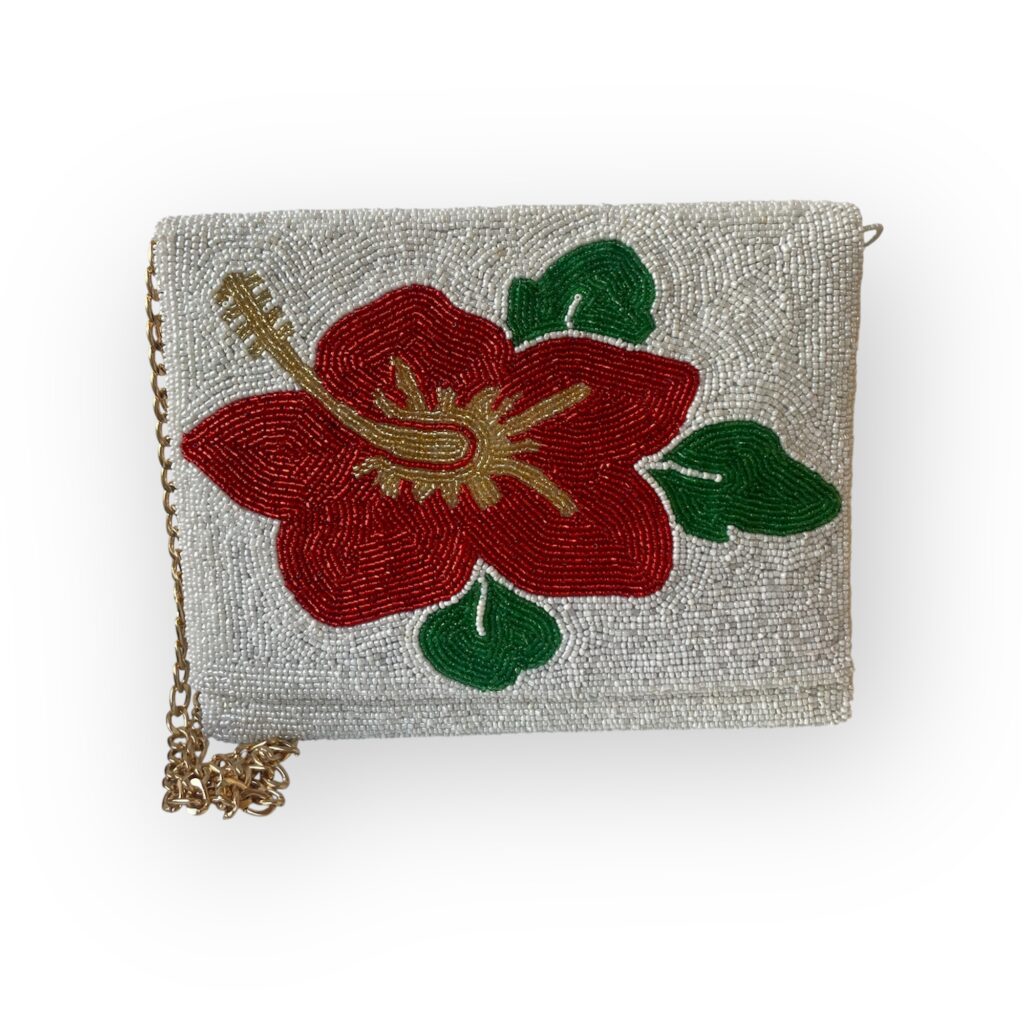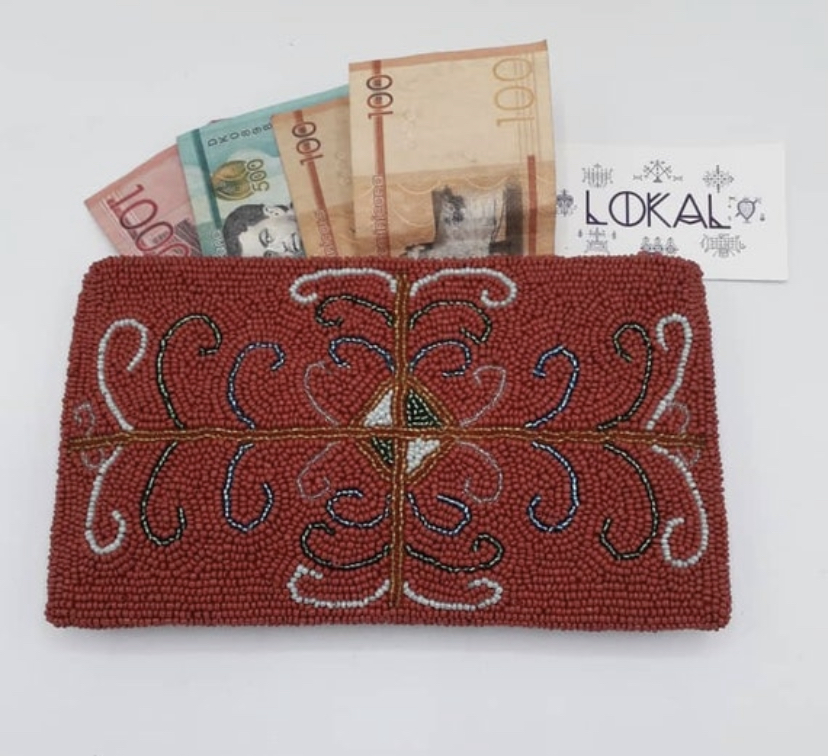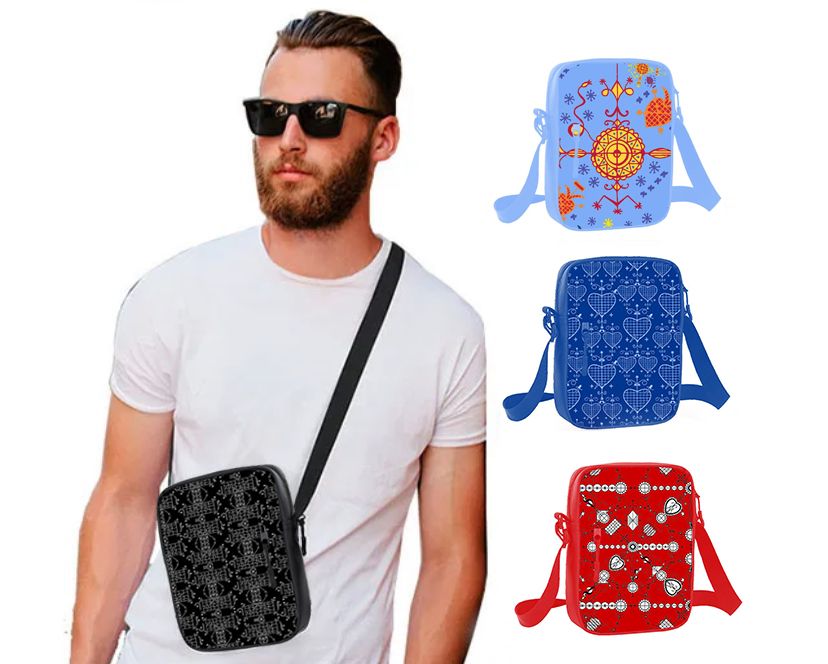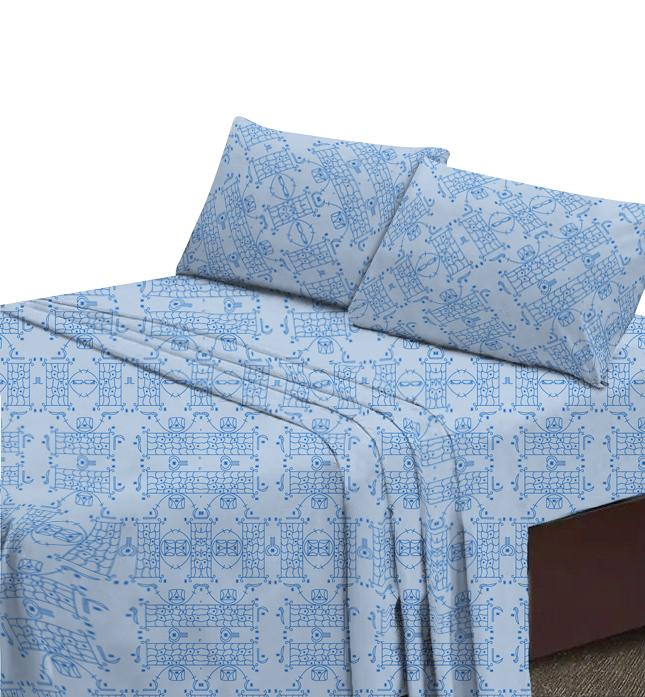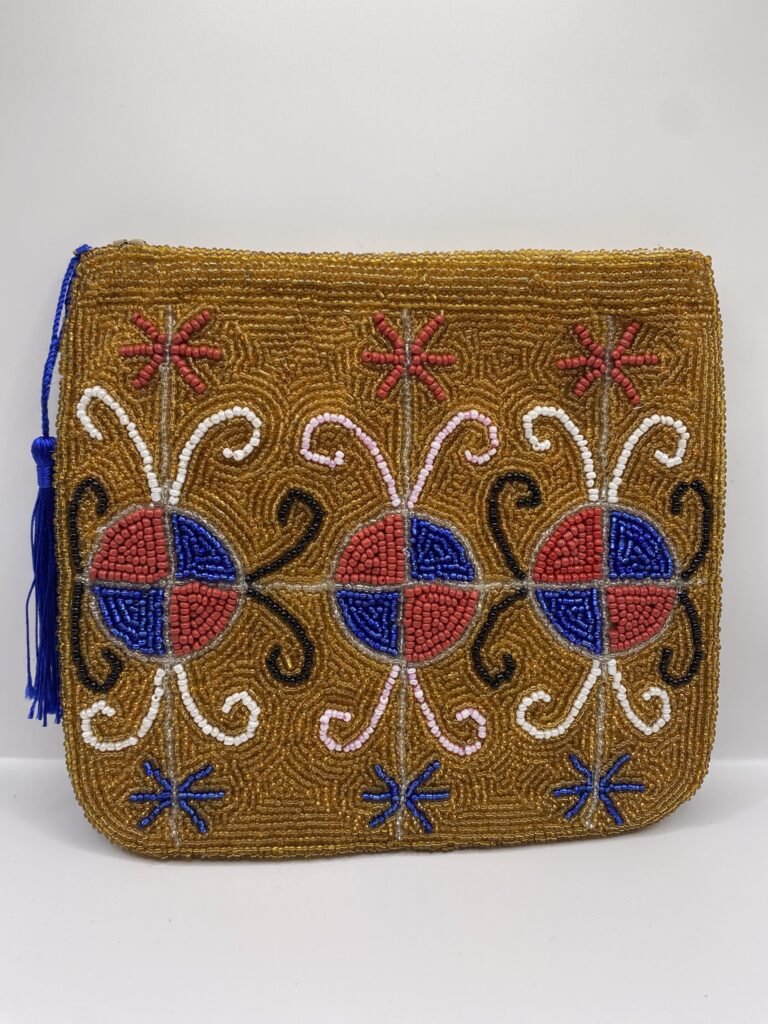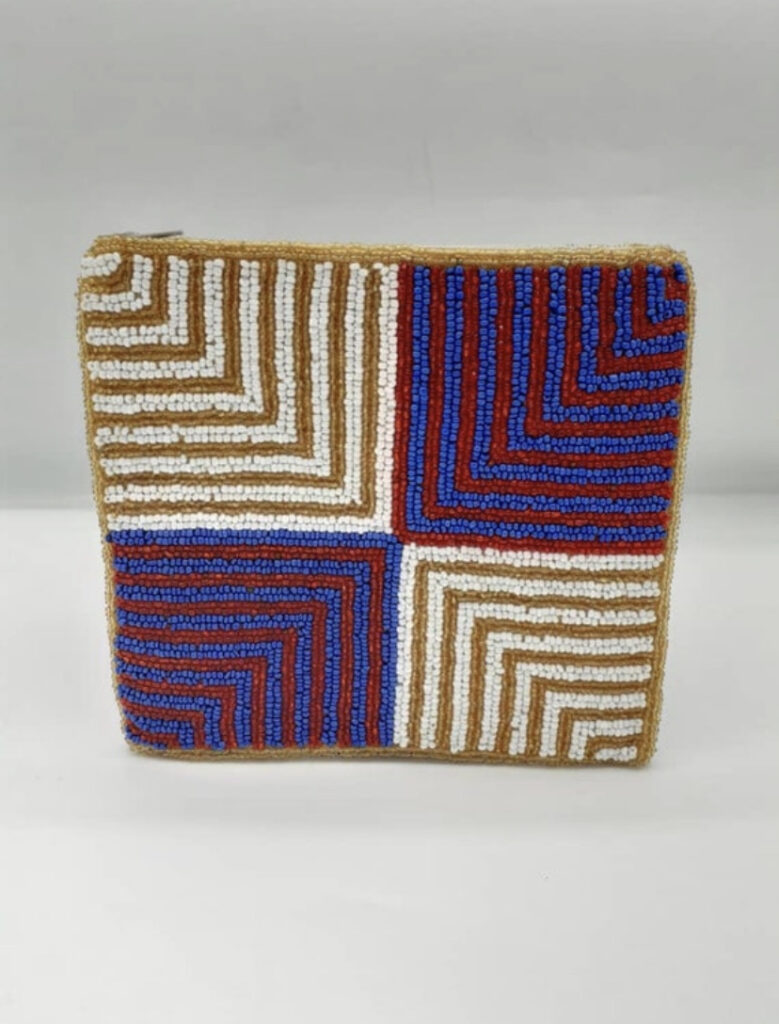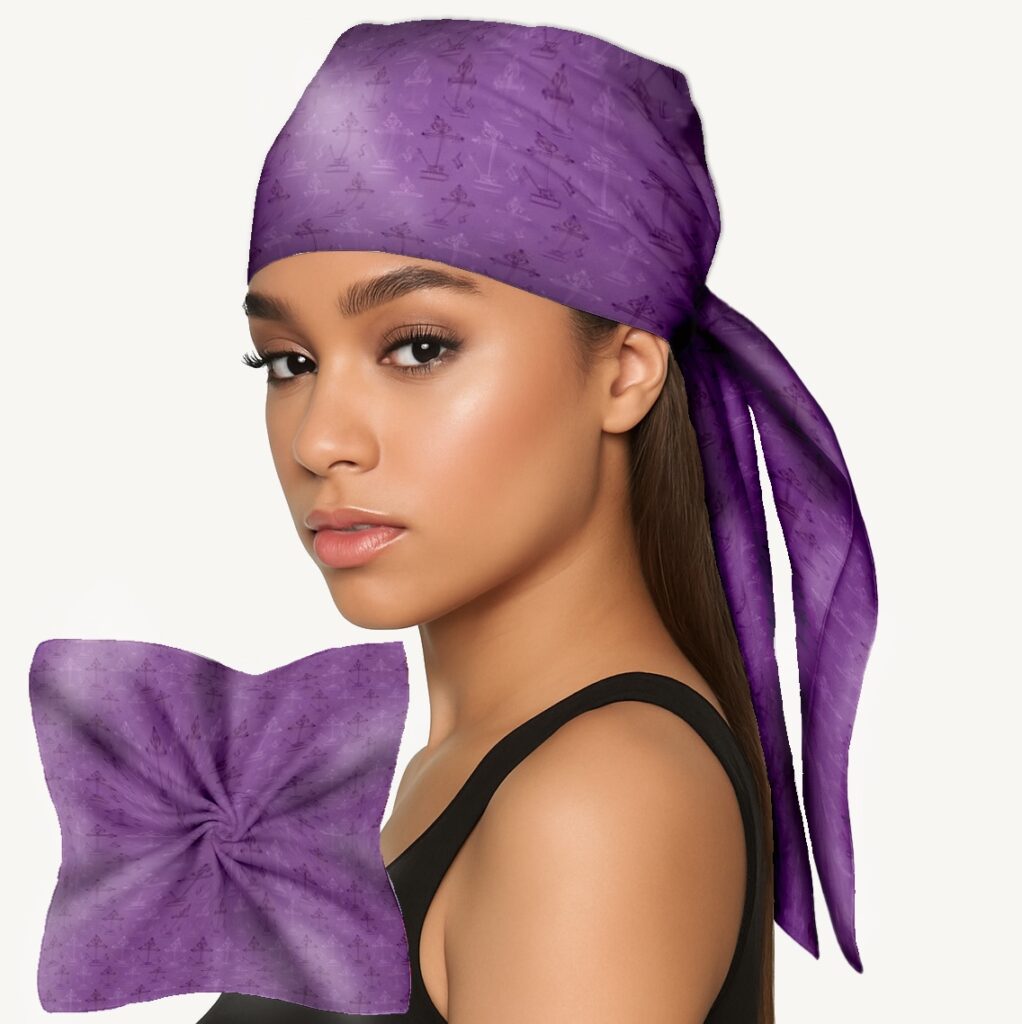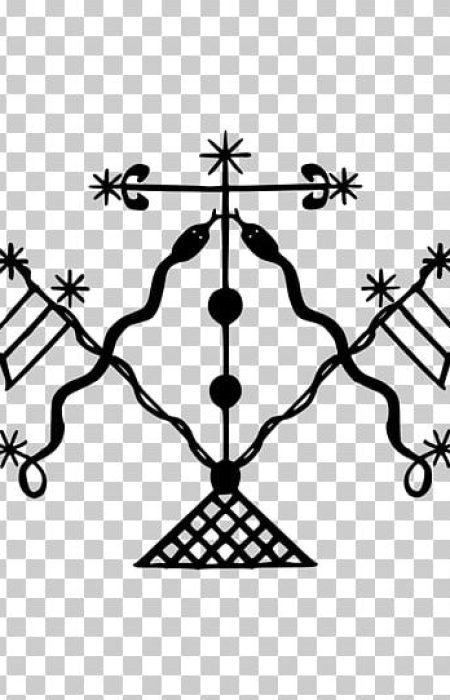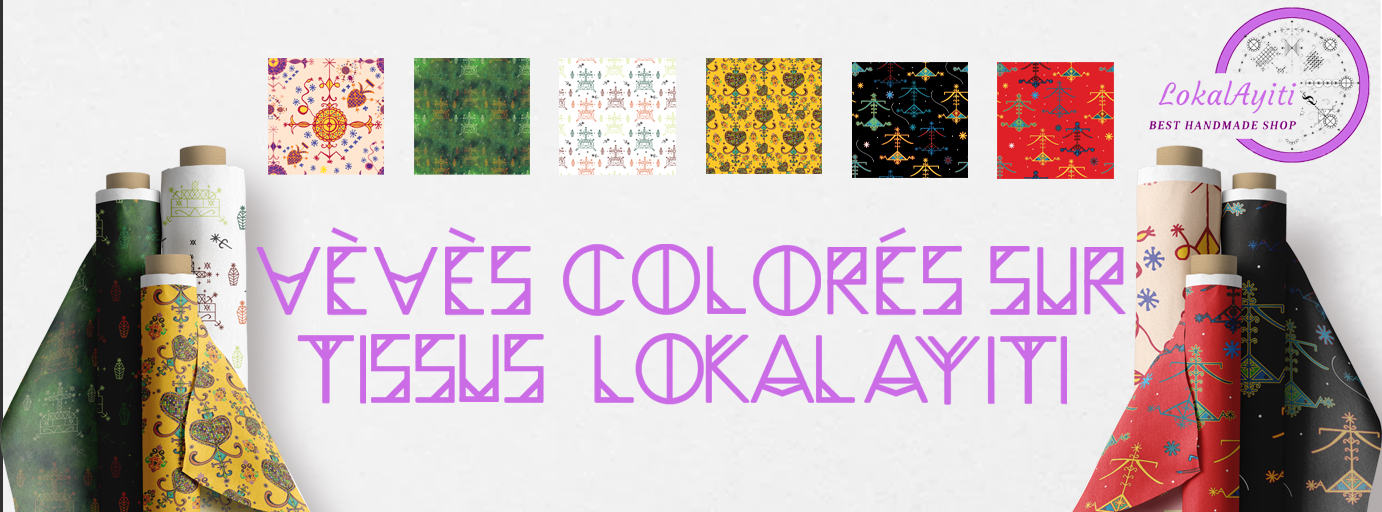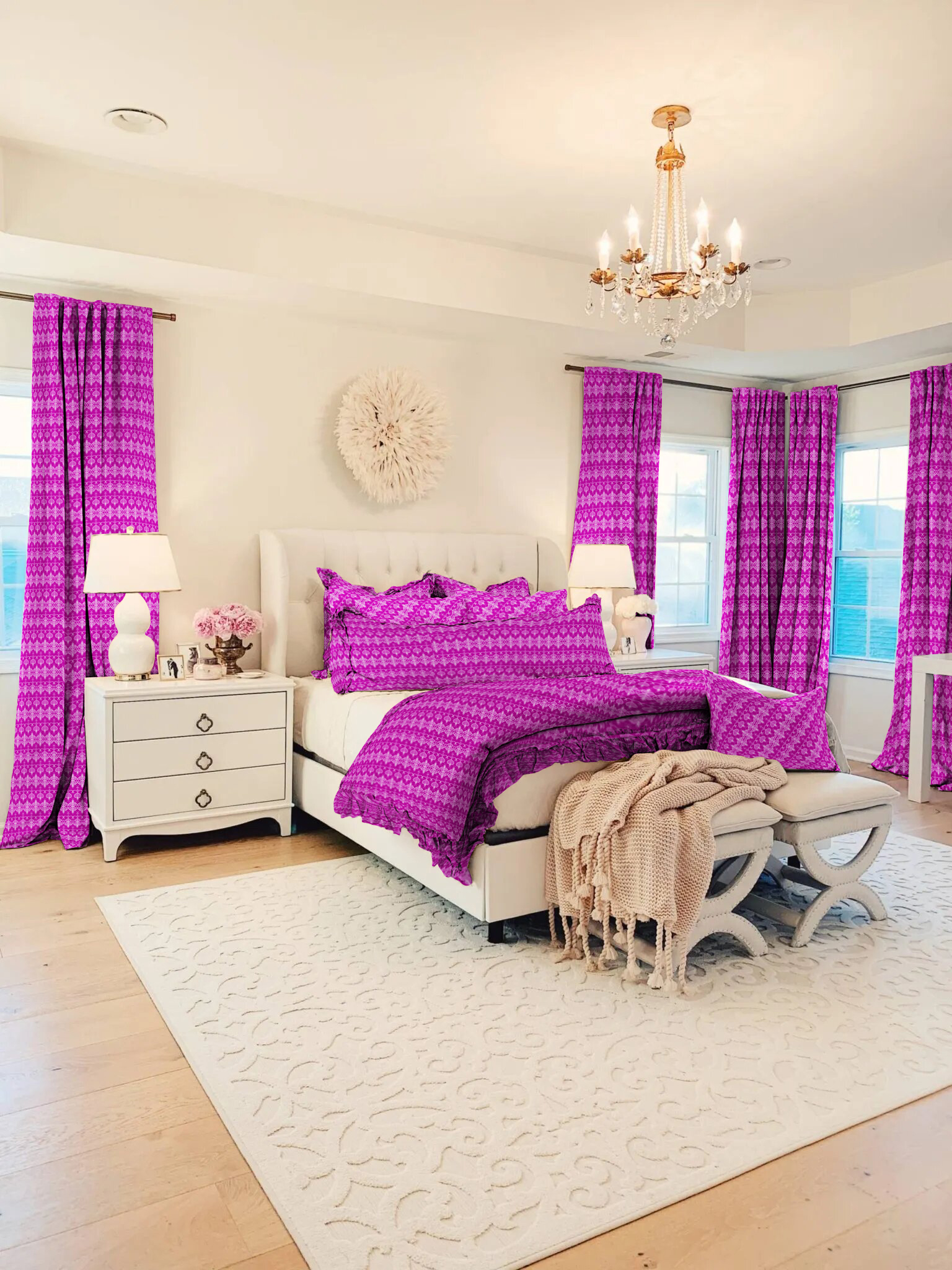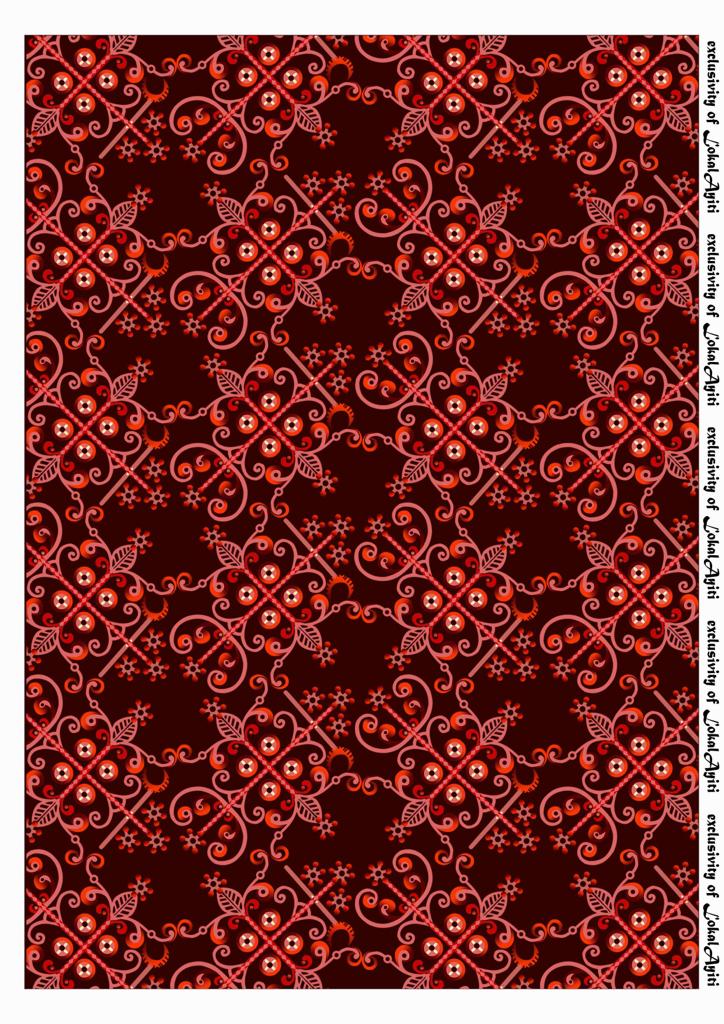Some Veve printed on LokalAyiti fabrics
Gran Brijit
GranBrijit is the mother of burials, the loa of money and death, and Baron Samedi’s wife. Her Irish name suggests a connection to Brigid/St. Brigit, the Celtic goddess of poetry, smith craft, and healing. She’s generally white. She’s buried in Haiti’s first woman’s grave. Her colors are black, purple, and white, and she serves on Mondays and Saturdays. Black chickens are her sacrifices. Like her husband and the other Guede Spirits, she has a “potty mouth” and speaks profanity. Gran Brijit will preserve cross-marked gravestones. Those who appear to be faking possession by Maman Brigit at a Vodou ceremony may be submitted to this test, which they would fail if their possession is not real. Her heritage is the banda dance.
Ogun
Ogun (Ogoun) is a traditional warrior like the Greek Ares. Ogun is great, powerful, and triumphant, yet he also displays the fury and destructiveness of a warrior whose strength and brutality may turn against the society he serves. Ogun’s prophesy and magic give him power. Ogun is credited for starting, leading, and empowering the Haitian Revolution of 1804. He must assist people in having a responsive government. Fire, iron, hunting, politics, and war are his domains. He’s the father of modern technology. Ogun supports his family. Hunting feeds his family. He is the patron of smiths and the jobless and is shown holding a machete or sword, rum, and tobacco. He’s one of Erzulie’s husbands, but he’s also in love with Oshun.
Vèvè on dresses
Veve is related to Haiti culture. So many products can be found embroidered with Veve symbols. Past years have witnessed rapid progress in the textile industry craved with Veve. So many textile companies are taking customized orders for dresses with Veve. Haiti’s community loves to wear these dresses to show their attachment to their African ancestry. These dresses are compositions produced to depict the VèVè drawings in Haitian culture.
Lokal Ayiti is a famous brand for Veve clothing. With the passage of time, the Haiti community is finding its worthy Voodoo culture to be expressed through Veve clothing. LokalAyiti has a variety of products drawn Veve on them. The quality of these products is, of course, up to the mark. It includes men’s & women’s clothing, bags, and other accessories.

Ayizan
Ayizan is the French marketplace, trade, and herbal healing loa. She symbolizes love and Vodou’s initiation procedures. Ayizan is the first or archetype mambo (priestess), linked with priestly knowledge and mysteries, especially initiation. She protects rituals. She’s married to Papa Loco and syncretized with Saint Clare. She doesn’t drink, and her sign is a palm frond. On Palm Sunday, people offer her the leaves. She’s gold, yellow, white, and silver. In New Orleans, she is given sugar cane syrup, yams, plantains, and palm fronds as offerings.
